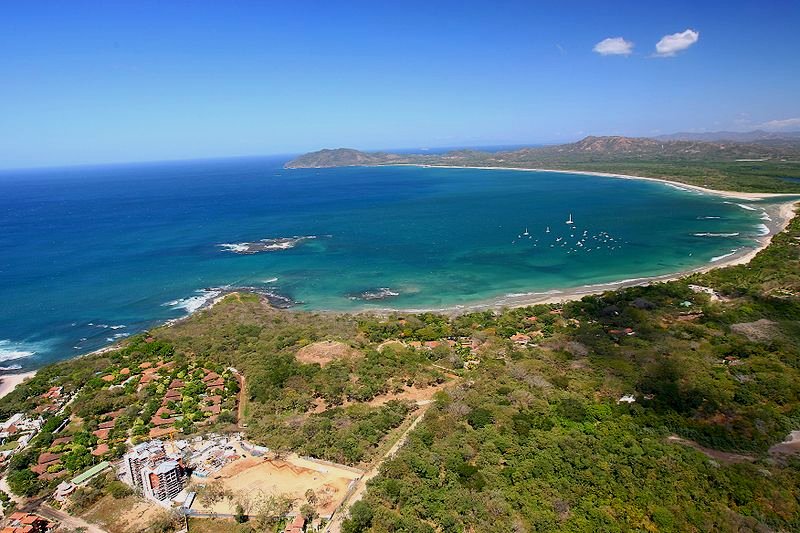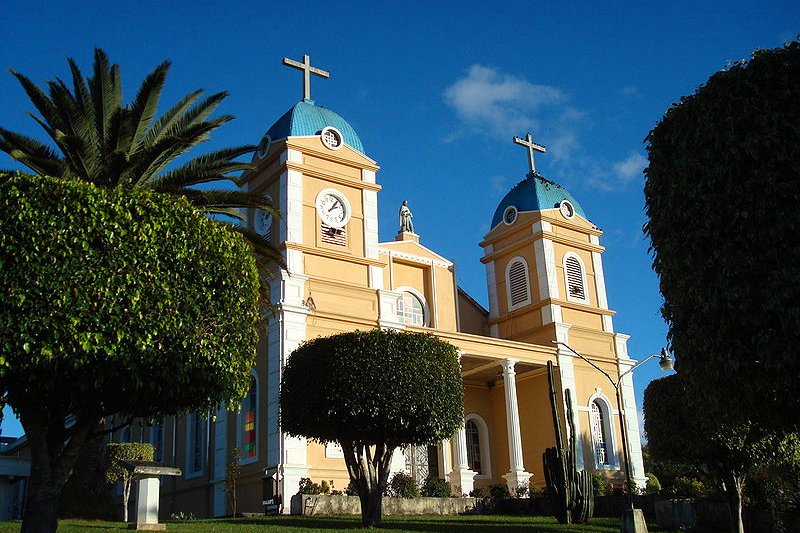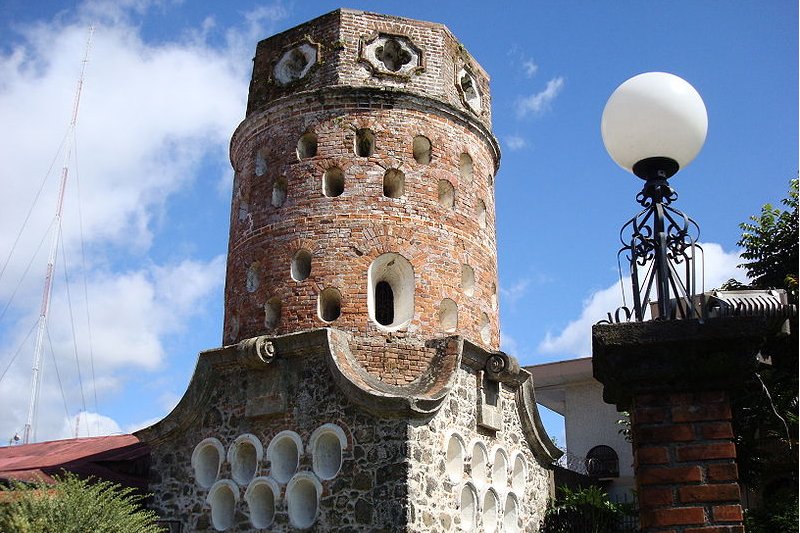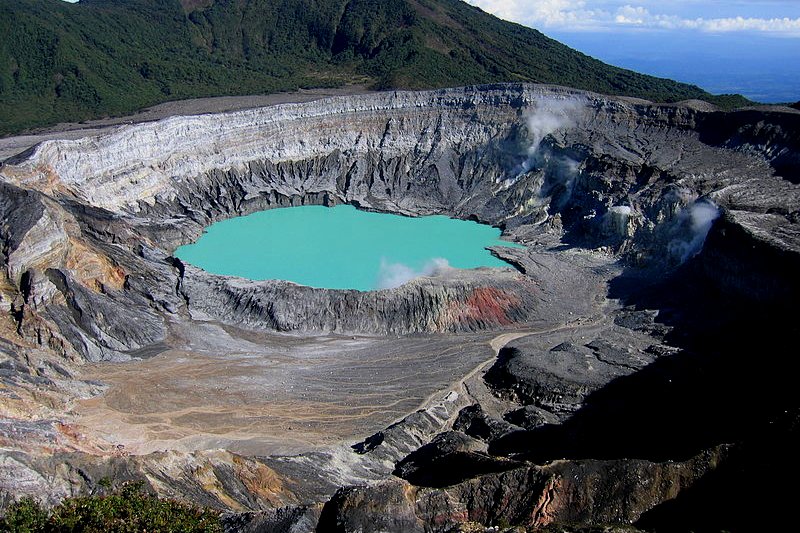 View of Playa Langosta in Costa Rica. In the middle is the island of Capitan and the beach at Langosta
View of Playa Langosta in Costa Rica. In the middle is the island of Capitan and the beach at LangostaSource: https://commons.wikimedia.org/wiki/File:Costa_Rica_Playa_Langosta_Isla_Capitan_Playa_Tamarindo_Playa_Grande_2007_Aerial_Photograph_Tamarindowiki_03.JPG
Author: Tamarindowiki

Costa Rica is a small country in Central America. It is bordered by Nicaragua to the north and Panama to the east and south. Costa Rica has a coastline facing the Pacific Ocean to the west and south, and with the Caribbean Sea to the east.
Costa Rica is a constitutional democracy headed by a president. It declared independence from Spain on 15 September, 1821, after which it was part of the First Mexican Empire until 21 March, 1847, when it became part of the United Provinces of Central America. Costa Rica was recognized by Spain as an independent nation on 10 May, 1850.
 The Church of San Marcos Tarrazu in Costa Rica
The Church of San Marcos Tarrazu in Costa RicaSource: https://commons.wikimedia.org/wiki/File:San-marcos-tarrazu-church-costarica.jpg
Author: Tarrazu

Covering 51,100 sq km (19,653 sq mi), Costa Rica today has a population of around 4.3 million people (2011 estimate). Over three quarters of the population is Roman Catholic. The official language spoken here is Spanish, although Mekatelyu, a creole form of English, is also spoken around Puerto Limon.
The official currency here is the Costa Rican colón (CRC). In 2009, Costa Rica had a nominal GDP of $29.3 billion, and a per capita nominal GDP of $6,345. It had a per capita GDP at purchasing power parity of $10,579.
 El Fontín monument in Heredia, Costa Rica
El Fontín monument in Heredia, Costa RicaSource: https://commons.wikimedia.org/wiki/File:Fort%C3%ADndeHeredia.JPG
Author: Tillor87

Costa Rica is in the Central Standard Time Zone, which is six hours behind Coordinated Universal Time (UTC-6). Traffic in Costa Rica drives on the right. The phone IDD code is +506.
Costa Rica experiences a tropical climate with temperatures that are quite uniform throughout the year, with differences due more to elevation. There are two pronounced wet seasons, once in July and another in December.
 Eruption of the Arenal Volcano in 2006
Eruption of the Arenal Volcano in 2006Source: https://commons.wikimedia.org/wiki/File:Arenallong.jpg
Author: Matthew Landry

Tourism is today one of the mainstays of the economy of Costa Rica. The country is well-known as a ecotourism destination, with numerous pristine national parks.
Planning your trip to Costa Rica
Most visitors can enter Costa Rica without a visa for up to 90 days. The main gateway to the country is Juan Santamaria Airport (SJO) serving the capital, San José. Crater of the Poás Volcano in Costa Rica
Crater of the Poás Volcano in Costa RicaSource: https://commons.wikimedia.org/wiki/File:Poas_crater.jpg
Author: Peter Andersen

Preparing Money for your trip to Costa Rica
The currency used in Costa Rica is the Costa Rica Colons (CRC).Major Cities in Costa Rica
World Heritage Sites in Costa Rica
Costa Rica ratified the World Heritage Convention on 23 August, 1977. As of August 2010, it has three World Heritage Sites, all in the Natural category. Costa Rica has another two sites presently on the World Heritage Tentative List.Sites in Costa Rica on the World Heritage Tentative List
- Plenitude under the sky. Park of Pre-Colombian Stone Spheres (2001)
- Corcovado National Park and Isla del Caño Biological Reserve (2003)
Places of Interest in Costa Rica
- Arenal Volcano
- Cahuita National Park
- Chirripo National Park
- Corcovado National Park
- Manuel Antonio National Park
- Monteverde and Santa Elena Cloud Forest Reserves
- Pacuare River and Protected Zone
- Rincón de la Vieja Volcano National Park
 Latest updates on Penang Travel Tips
Latest updates on Penang Travel Tips

Copyright © 2003-2025 Timothy Tye. All Rights Reserved.

 Go Back
Go Back